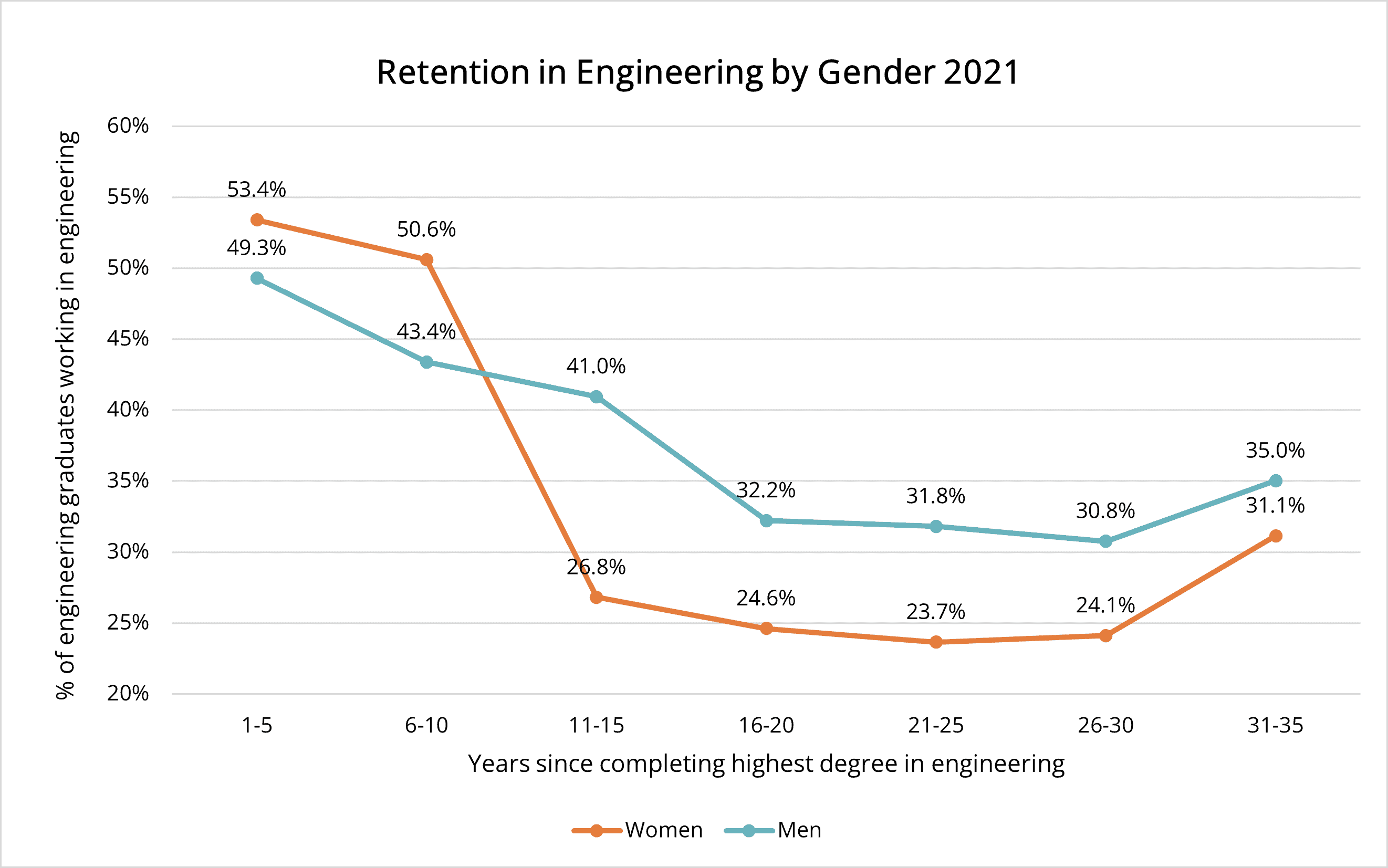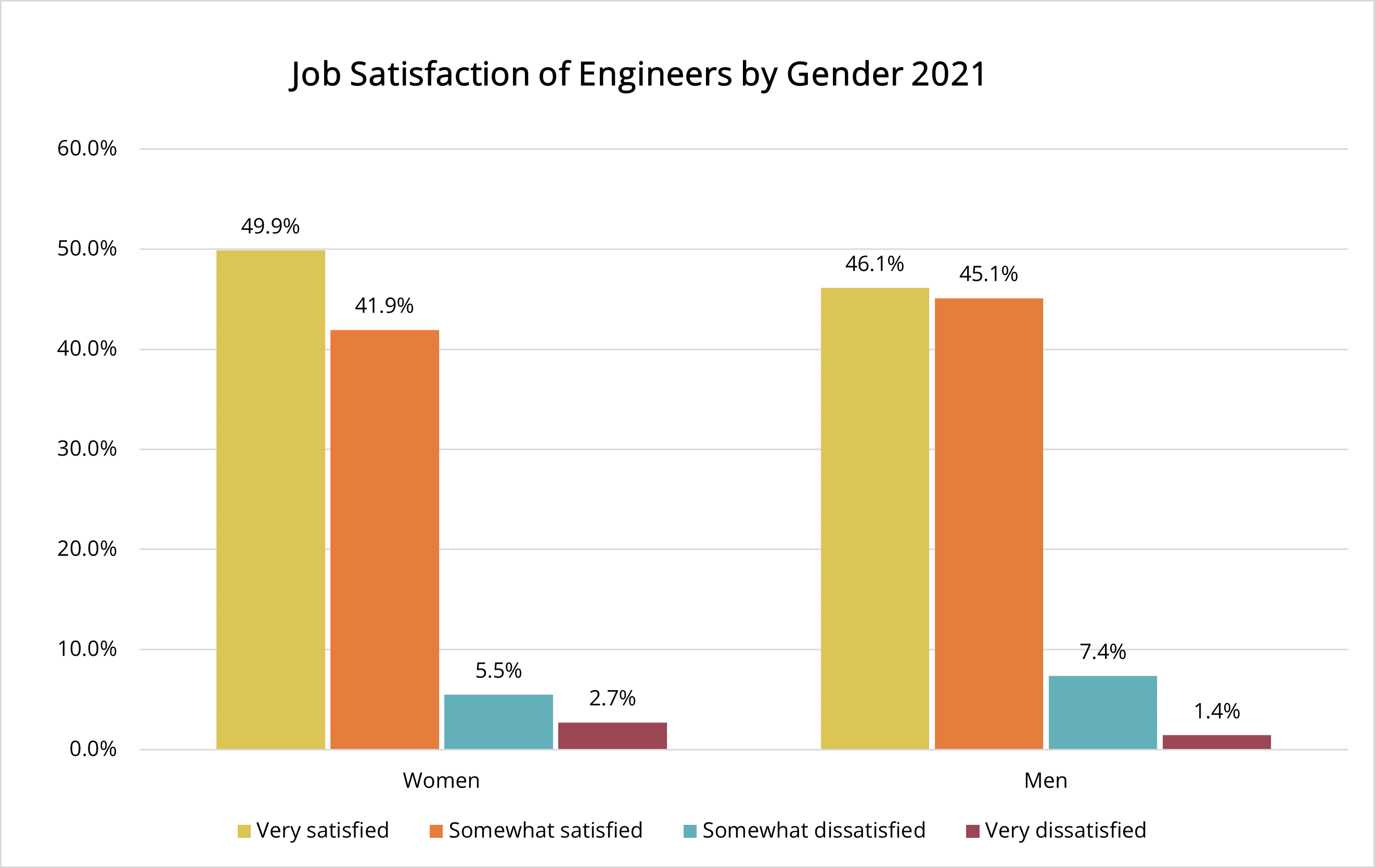Retaining diverse and talented women in the engineering workforce is an urgent matter. According to the National Center for Science and Engineering Statistics, in 2021, 53.4% of women with engineering degrees who graduated within the last 1 to 5 years worked in engineering roles, compared to 49.3% of their male counterparts. However, this trend drops when examining the workforce retention rates for women who completed their degrees 11 to 15 years before 2021. In this instance, only 26.8% of women engineers continue in engineering jobs, compared to 41% of male engineers. The gender gap in engineering retention raises concerns about the underlying causes influencing women’s career paths.

Why Women Leave Engineering Careers
There are various reasons why women with engineering degrees are not working in engineering careers. According to the National Center for Science and Engineering Statistics, in 2021, women with bachelor’s degrees in engineering reported the primary factors for leaving engineering occupations included a change in career interest, family-related considerations, and the absence of jobs in their highest degree field. Women with master’s or doctoral degrees left the engineering workforce for similar reasons. These include a shift in career interests, an apparent lack of pay or promotion opportunities, and family-related responsibilities. These reasons highlight the difficulties women in engineering can experience, requiring them to reconsider their career paths.
Job Satisfaction Among Women Engineers
Despite the troubling findings on retention, women engineers who choose to stay in the sector report high levels of job satisfaction. According to the National Center for Science and Engineering Statistics, in 2021, 91.8% of women in engineering jobs were satisfied with their careers. Only 8.2% of women engineers reported being dissatisfied with their job. These numbers closely resemble the job satisfaction rates among their male counterparts.

Keeping women in engineering is critical to fostering diversity, innovation, and equality. Employers can build an inclusive workplace that promotes creativity and innovative problem-solving by ensuring equal opportunities, challenging biases, and providing role models. Retaining women in engineering fuels economic growth, taps into a diverse skill pool, and drives progress in addressing global challenges. Adopting these goals is about fairness and shaping a more sustainable and equitable future for engineering and society.
SWE Efforts to Increase Female Representation in the Engineering and Computer Science Workforce
- SWE Public Policy
- SWE Legislative Action Center and Congressional Outreach
- SWE Studies on Gender Bias and Workplace Experiences
Additional Resources
- The National Center for Science and Engineering Statistics (2022). National Survey of College Graduates. https://ncsesdata.nsf.gov/builder/nscg